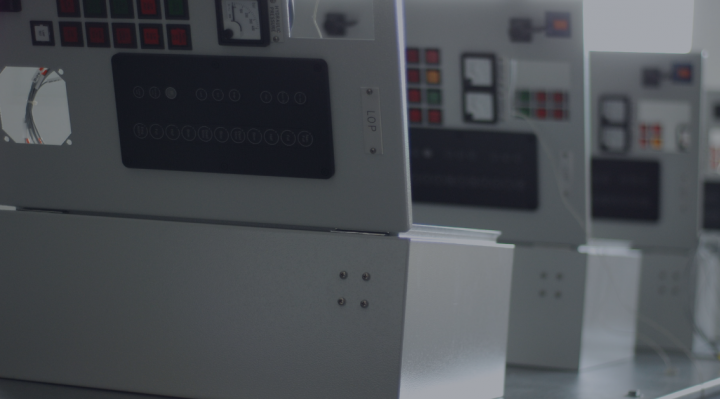Irrespective of the industry, time is the only resource that cannot be bought, produced or even changed to suit your needs. But you can learn to manage it, and even make it work for you.
The primary task of electronics manufacturers on a contract basis (EMS) is to deliver the ordered products to the customer in the required quantity and within the specified time, and the main tool that helps to achieve this goal is the so-called Takt Time.
Takt Time in electronics assembly
What is Takt Time purpose? It informs how often a product (e.g. PCBA) leaves the production line. Here is the Takt Time definition: the time necessary to produce or complete a product in order to meet customer requirements. The term itself comes from the German word ‘Takt’, which in music means rhythm or pulse. In industry, including electronics assembly, Takt Time is an important metric for determining production time in relation to customer demand.
In short, the Takt Time definition is: the time between starting work on one product and moving on to the next. Note: there is a difference between Takt Time and Cycle Time, which is the average time it takes to complete one unit of a product, or with Lead Time, which is the total time from receipt of an order to delivery of the product.
The origins of the Takt Time concept
Takt Time was first used by German engineers in the 1930s, when Germany was experiencing an economic boom as a result of army orders and the war itself.
Shortly thereafter, the concept began to be applied in Japan, where Toyota used it in its production system, and then it found its way into manufacturing plants around the world along with the Lean Manufacturing approach developed and implemented by Toyota. Its main assumptions were and are the elimination of waste and maximisation of production process efficiency, i.e. what managers of all enterprises are striving for.
How to calculate Takt Time
There is a difference between Takt Time and Cycle Time, as well as Lead Time and Stock Turn Time, as the first one cannot be measured with a stopwatch. It must be calculated.
The Takt Time is determined by dividing the available production time (i.e. the time required to produce a product from start to finish) by customer demand. It is also important to remember that this parameter takes into account neither employee breaks, nor maintenance, nor reset periods between units.
For example, if an EMS electronics manufacturer has a Takt Time of five minutes, this means that it needs to produce or complete a product - for example, the aforementioned printed circuit board - exactly every five minutes to meet customer demand.
This time is equal to the available working time divided by the size of the customer demand. Or, to put it in simpler terms, if an electronics assembly company works two shifts, i.e. for 1000 minutes a day, and the customer demand is 500 printed circuit boards a day, then to calculate the Takt Time, we divide the production time by the customer demand:
1000/500 = 2 minutes
This means that EMS must produce a new circuit board every two minutes to meet demand. And that is their Takt Time.
What is Takt Time application?
But Takt Time is far more than just a measure of time. It is, in fact, a completely different approach to the way production is planned: it allows you to calculate the total delivery time for a finished batch of products to a customer, and thus to adjust and optimise your electronics assembly to fit in time for the customer's order.
What is important, the Takt Time allows you to plan and optimise the use of the production facility's capacities, as well as to run the production according to the principles of just in time, i.e. to deliver the products to the customer at the right time and in the right quantity.
Production in accordance with the Takt Time makes it possible to identify and eliminate problems with the production capacity of an industrial plant, problems with the synchronisation of processes and quality. Therefore, Takt Time is used to optimise the production process and is an essential tool to ensure the flow of products through each production unit of EMS plants in the most efficient way.
Benefits of Takt Time for EMS manufacturers
EMS companies that implement Takt Time in their operations can:
- Identify bottlenecks in electronics assembly more quickly because they are able to capture the locations and processes that are slowing down the production line
- Locate low-performance production processes more easily, and
- Minimise the amount of waste generated on the production line as they focus on value-added work
Takt Time also introduces routine functions on the production line, enabling operators to work faster and with greater efficiency. This parameter:
- Supports the production planning area
- Enables the estimation of service processes
- Helps to maintain a constant production flow
- Standardises work processes
- Allows setting realistic time targets
- Enables reduction of production costs
- Minimises the amount of overtime
Takt Time also identifies overworked employees who will produce lower quality products in an attempt to meet unreasonable production standards and norms.
On the other hand, Takt Time makes it possible to spot employees with lower workloads and, thanks to this, to better use their potential.
With this approach, Takt Time makes it possible to evenly distribute the workload among all employees in each shift, while at the same time distributing tasks in such a way that the quality of finished products does not suffer.
Limitations in the use of Takt Time in electronics assembly (and how to overcome them)
Unfortunately, it is a fact that it only takes one place in the process to stop production of the whole line. Insufficient Takt Time can increase the likelihood of machine breakdowns as workers rush to meet production targets. And overloaded and overtired workers increase the likelihood of errors and resulting losses.
On the other hand, excessive Takt Time means a non-optimised production cycle, which increases the cost of producing the products ordered by the customer and makes the EMS company less competitive.
In addition, the increase in customer demand and the consequent need to reduce the Takt Time means that the production lines must be restructured. Because an increase in the company's efficiency cannot be achieved at the cost of overloading the employees with excessive workload, but must result from, for example, elimination of bottlenecks, improvement of production flows and implementation of new technologies.
Here, Takt Time allows you to implement production monitoring tools and gain insight into electronics assembly operations in real time. In turn, digital production dashboards in the production hall can be used to check whether Takt Time is being adhered to, and which operators are behind or ahead of Takt Time.
Conclusion:
As you can see, Takt Time is a very important indicator for electronics manufacturers seeking to optimise their production process. Especially as factories are becoming more and more automated and their processes more and more digital. Therefore, Takt Time is becoming easier and easier to measure and track, and EMS manufacturers can use it to improve their operations and gain a competitive advantage.
Using Takt Time, EMS manufacturers can:
- estimate the expected production time, and thus identify any potential risk of delay at an early planning stage (e.g. if the production plan does not include any ‘stock’ for unplanned events)
- control productivity and work progress
- raise awareness throughout the organisation of time management and opportunities for its use
However, nothing in this world, and therefore in production processes, is constant. Thus, customer demand changes according to the demand for a specific product, and production efficiency depends on many factors, such as environmental conditions affecting, for example, the efficiency of employees.
For this reason, a one-time calculation of the Takt Time does not allow for optimisation of the production process changing over time. Therefore, this parameter should be updated on a regular basis.
Lean Manufacturing experts recommend that Takt Time should be determined at least once a month, and definitely for each major change in the production process. It is worth following this rule, because an updated Takt Time allows you to detect new bottlenecks and wasteful areas and thus optimise processes on which the competitiveness of EMS manufacturers depends .






